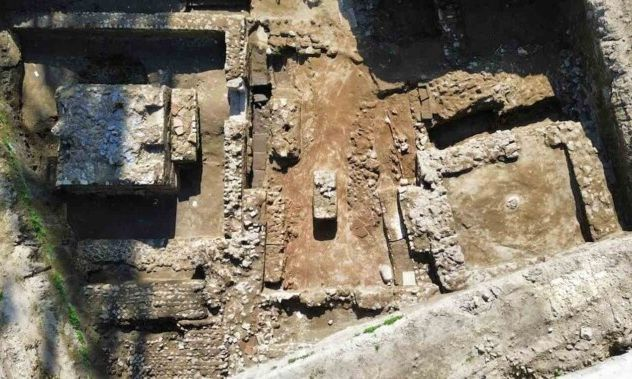Does this evidence actually reveal a historical "medieval New York"? On a Baltic island, an archaeologist discovers evidence of "Jomesburg," a Viking metropolis. Skepticism persists despite the discovery of an old castle.
An archaeologist claims that the finding of historic stronghold ruins on a Polish island in the Baltic Sea provides proof that the Jomsborg Viking metropolis existed. These findings disprove a belief that has long been held to be false.
An observation tower on a Polish island in the Baltic Sea has rekindled the dispute over the existence and location of a possibly lost Viking city from the 10th century. A large portion of Viking history is literally and figuratively buried. However, an apparently straightforward construction project for an observation tower in a public park on Wolin Island turned some unexpected artifacts. According to the finder, these relics might point to the existence of a city from the tenth century.
Viking researchers are ecstatic as artifacts from Polish islands suggest the existence of a metropolis from the tenth century. The mysterious city of Jomsborg might at last be recorded in history.
Wojciech Filippowiak, an archaeologist at the Polish Academy of Sciences engaged in the study, describes it as "exciting." He told The New York Times, "It might answer a 500-year-old mystery: Where is Jomesburg.
Ancient Viking literature made reference to Jomsborg
The first written accounts of Jomsburg, a key aspect of Viking history, are from the 12th century. However, nobody is certain of where it is. Because of this ambiguity, some people came to think of Jomesborg as a collection of myths—a fantastical city that combined a castle and a thriving commercial center.
If confirmed, Jomsborg would have served as a trading hub for Slavs, Germans, and Vikings—groups with a long history in the area. The Volyn History Museum's director, Karolina Kokura, compares it to "the New York of the Middle Ages on the Baltic Sea."
This comparison would still be valid if Jomsborg had existed prior to its mention in early Viking texts. In those sources, a bustling town with a sizable population, a fortified military outpost, and a harbor for refueling Viking ships are all depicted.
It would be more than serendipitous if Filippowiak's finds turned out to be pieces of the original fortification. The park has been the subject of island-wide excavations in search of Viking history, but these efforts have not produced any firm conclusions. The discovery of such a crucial historical component might open the door to a plethora of fresh inquiry.
Additionally, it might spark heightened public interest. Should a historic Viking colony be proven, the persistent fascination of Viking civilisation might possibly boost tourism in the area.
In an interview with the New York Times, the mayor of Wolin, Eva Grybovska, said that "Vikings are captivating and garner enormous attention. Every corner here holds history".
She is so certain that displaying Viking items in a public park on a Baltic Sea island would pave a new way for drawing tourists—assuming, of course, that everything turns out to be authentic.







